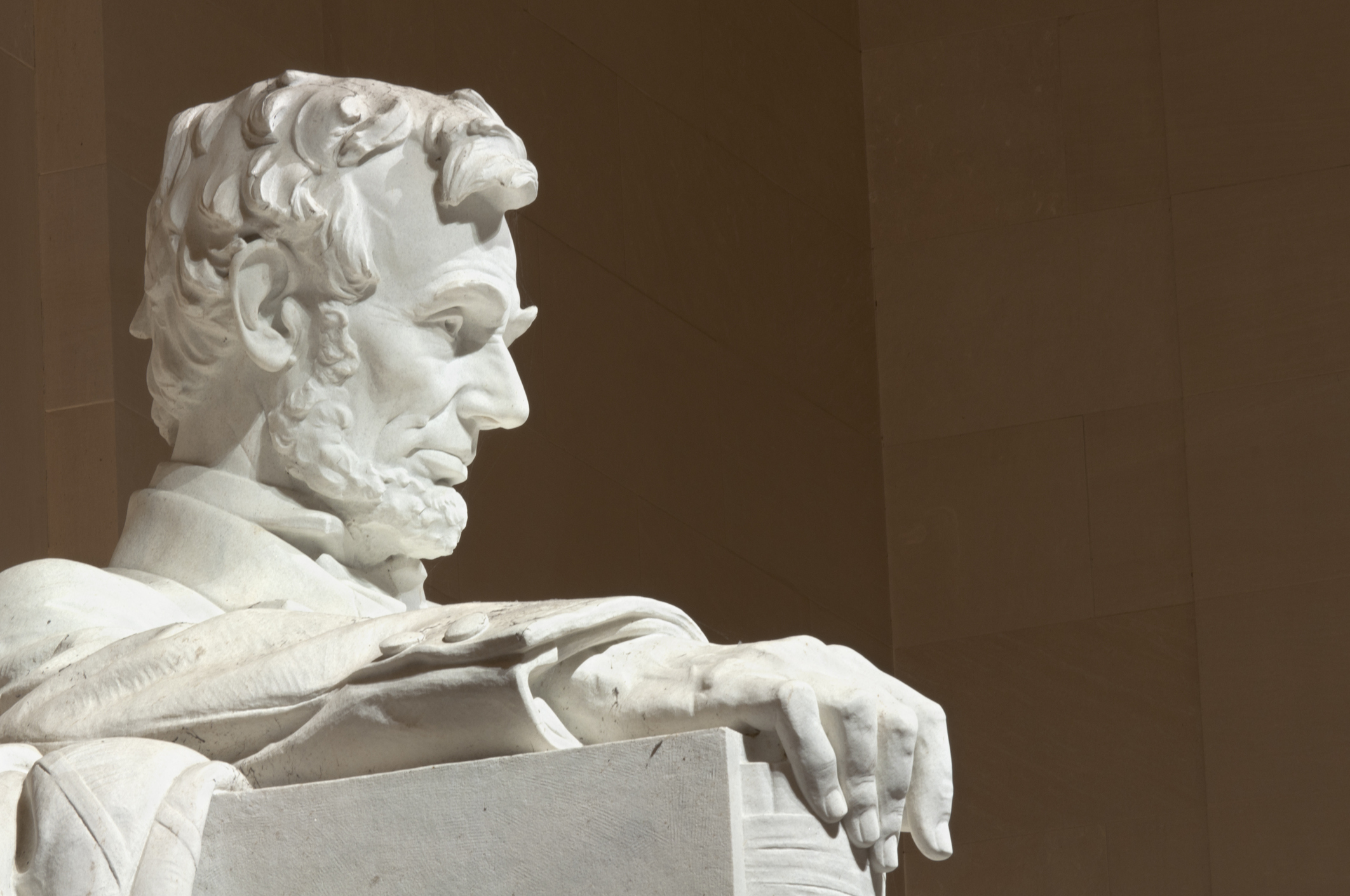Some last-minute advice for the convention.
Sleepwalking into Secession

We have flirted with disaster before. Now we must avert it.
Recently, the New York Times reported on a set of simulations run by a bipartisan group called the Transition Integrity Project. Both the Project itself and the mainstream media reports about it focused obsessively on fears that Donald Trump would refuse to accept the results if he lost the election.
Those fears were in keeping with theories on the Left that Trump was deliberately starving the Postal Service of funds so it would be unable to serve as a vehicle for a vote-by-mail election in November—a fear Trump himself has stoked with recent comments—and (much less plausibly) that Trump’s deployment of federal officers to Portland was a dry run for imposition of martial law.
Indeed, most of the misbehavior anticipated in the simulations was by Trump, and the report itself was clearly predisposed to assume the worst about him and the best about his adversaries (for example, the Communist and anarchist rioters who assaulted the federal courthouse in Portland on a nightly basis for two months are described as “racial justice protestors”).
Quickly, however, attention began to turn to another alarming component of the Times’s report. Longtime Democratic pro and Clinton lieutenant John Podesta, playing the part of Joe Biden, refused to accept defeat when the simulation projected a repeat of 2016—a Biden lead in the nationally-aggregated popular vote coupled with a Trump win in the Electoral College. His party would not allow him to concede, he said.
So, instead, the faux-Biden convinced Democratic governors of Wisconsin, Michigan, and North Carolina—states that went for Trump in this simulation—to certify Democratic electors instead, putting Biden over the top. So far, though his actions were deeply troubling, Podesta had done nothing that the simulated Trump team had not also done in different circumstances.
The Democratic House accepted the disputed electors and declared Biden president, but the Republican Senate continued to back Trump. This was not all, though. Podesta persuaded California, Oregon, and Washington state to threaten secession unless Republicans accepted a package of reforms such as: abolishing the Electoral College, stacking the Senate by means of granting statehood to the District of Columbia and Puerto Rico and splitting California into five states, and putting an age limit of 70 on Supreme Court justices. Stalemate was not resolved before the constitutionally mandated inauguration day. The military, it was said, would have to decide which commander-in-chief to obey.
It should be emphasized that the Podesta Gambit, which would have been the stuff of fantastical fiction a few years ago, came out of a role-playing exercise in which none of the role-players have any formal connection to either of the campaigns. Moreover, those role-players doubtless were more willing to throw caution to the wind knowing the exercise was a game. Nevertheless, the prospect of a full-fledged constitutional crisis born of electoral deadlock feels plausible in ways it has not before in our lifetimes, even in 2000.
Trump, of course, never misses an opportunity to pour gasoline on the fire of our national polarization. He has rarely shown either the inclination or the capacity to build bridges when he could burn them instead, and his narcissistic personality could make it nearly impossible for him to go quietly into the good night if voters try to send him there.
For their part, Democrats have not drifted but charged headlong so far to the left that not a single Democratic member of the House Judiciary Committee could tell Attorney General William Barr that they would stand up against Antifa if it tried to burn down the U.S. Capitol. The venerable party is now under the functional control of cancel mobs and the far Left, as if Henry Wallace had returned from the grave to take his revenge.
Moreover, from the weaponization of the CIA and FBI to the transparent smear executed against Brett Kavanaugh to impeachment, Democrats since 2016 have demonstrated an escalating willingness to do anything to stop Trump. Impatient with the restraints of the American system, they have also been increasingly sympathetic to proposals to do away with those restraints. That Democrats would seriously demand the institutional deconstruction of checks and balances and federalism as the price for national peace is no longer far-fetched. John Podesta is not a weird outlier; he is a Democratic heavy hitter attuned to the sentiments of his party’s upper echelons.
Electoral Crises of the Past
Though unknown to us in our time, such crises are not without precedent in American history. Three are worth consulting.
The first came in the election of 1800. In the original constitutional design, each elector got two votes for president. The candidate receiving the most electoral votes became president, as long as his number was more than a majority of the electors; the runner-up became vice-president, subject to the same majority requirement. This system was designed for a non-partisan setting, but misfired terribly once parties took hold.
By 1800, both the Federalists and the Democratic-Republicans realized that they needed to designate tickets and then informally arrange for their electors to all vote for their presidential nominee while withholding one vote from their vice-presidential nominee so he would, indeed, finish second. However, Jefferson’s party failed at this task, accidentally leaving Jefferson and their vice-presidential nominee Aaron Burr tied for first place.
The election was thrown into the House of Representatives, where each state gets one vote and a majority of states must vote to elect. The Democratic-Republican House members naturally supported Jefferson, but the Federalists supported Burr. No one had a majority of states, though, leading the Federalist-controlled Senate to suggest the (unconstitutional) expedient of having the Senate decide.
In the meantime, around the country, Jefferson clubs prepared to march on Washington with muskets. The crisis was only resolved when Alexander Hamilton convinced Congressman James Bayard of Delaware to vote for Jefferson, breaking the deadlock. Jefferson, Hamilton averred, had convictions; Burr had none. Hence was accomplished the first transition of party power in the nation’s history. By 1804, the Twelfth Amendment had been ratified, separating the presidential and vice-presidential votes by electors.
Then there was the case of 1876. Voter fraud was rampant, and three states—Louisiana, Florida, and South Carolina—returned two competing sets of electors, one pledged to Republican Rutherford B. Hayes and the other pledged to Democrat Samuel Tilden, who led the nationally-aggregated popular vote. There was one additional disputed elector from Oregon. Without the 20 disputed electors, Tilden was one electoral vote shy of victory.
The Democratic House and the Republican Senate deadlocked over which electors to recognize. As in 1800, violence seemed possible. To resolve the stalemate, the parties concocted the extraconstitutional expedient of naming a commission to rule on the disputed electors. By an 8-7 vote, the commission decided every disputed elector in favor of the Republicans, giving Hayes the victory.
Peace was only guaranteed, though, when Republicans secretly gave the Democrats a huge concession—the withdrawal of federal troops from the South and the end of Reconstruction. Freed slaves were abandoned to the tender mercies of the Ku Klux Klan, and over the next two decades the edifice of Jim Crow was constructed.
The greatest electoral crisis of all came between these other two, in 1860. It triggered—though it did not cause—the Civil War. Tensions had grown dramatically in the preceding decade: ideological divisions widened as anti-slavery feeling grew in the North and the South flouted the principles of the Declaration of Independence more and more brazenly. “Bleeding Kansas,” the Dred Scott decision, and the John Brown raid all combined to feed apocalyptic visions.
Above all, Southern Democrats, having ruled the federal roost for decades, feared that the balance of power was shifting inexorably against them. They declared they could not live under Lincoln and the “Black Republicans.” When Lincoln won, they made good on their threats to secede. Lincoln’s attempt to resolve the crisis, by offering a constitutional amendment guaranteeing slavery where it already existed, failed.
The fire-breathing John Podestas of 1860 also preferred to destroy the country if they couldn’t run it. This crisis could not be solved by a letter from Hamilton or a cobbled-together extraconstitutional compromise. Instead, it resulted in battlefields drenched in blood and the deaths of 620,000 Union and Confederate soldiers out of a population of 27 million. An equivalent percentage today would yield over seven million dead Americans.
The inputs into the equations that produced these electoral crises were broadly similar. They required close elections combined with an environment in which the rivals saw each other as illegitimate even before the election. In 1800, Federalists saw Jeffersonians as seditious, while Jeffersonians saw the Federalists as monarchists and constitutional usurpers. In 1860, Southerners saw Lincoln and the Republicans as dangerous fanatics, and Republicans excoriated the slavocracy (though Lincoln himself was more circumspect).
In 1876, the fires of the Civil War were still smoldering: Republicans were seen by their opponents as tyrants and carpetbaggers even as they reminded voters that every Union boy shot down by a rebel in the late war was shot by a Democrat. Two of the three cases also featured a split Congress, with one party controlling the House and the other party controlling the Senate.
The outputs had a number of commonalities, as well, including danger or realization of political violence on a large scale and the use or consideration of constitutional or extraconstitutional remedies. These shocks to the political system were not overcome with trifles. Podesta’s response was credible: a mash-up of 1800 Federalists, 1860 Southern Democrats, and 1876 Democrats.
Playing with Fire
What would come after the Podesta Gambit was not explored in the simulation, which ended on January 20, 2021. But anyone who took such steps in real life would be playing with a very large fire indeed. Consider these questions:
What if the political leadership of the country bows to the west coast? It is not at all clear that portions of the center of the country would not then threaten secession themselves. On what principled basis could it be opposed? At the least, our federal system of presidential elections would be replaced with a unitary system deliberately designed to drown out voices from the middle, making it more likely that a split from the middle will take place someday.
On the other hand, what if Republicans shock San Francisco, Portland, and Seattle by not bowing to threats but rather saying “good riddance—don’t let the door hit you on the way out”? Some Republicans might calculate that their national position would improve markedly if we were to allow the western seaboard to saw itself off and float out to the Pacific, as Barry Goldwater might have said.
But who thinks the passion for separation, once uncorked, would end there? Other deep blue states would surely follow, and the country would shatter. And the shattering would be messy. Even deep blue or deep red states contain within their borders sizeable minorities of the opposition. In 1860, Lincoln had his strongest Southern showing in Virginia, where he won 1.3% of the vote. In 2016, Trump won 1/3 of the vote even in New York, California, Illinois, and Massachusetts, a proportion that translates to millions of people caught behind the lines.
Then there is the possibility that federal authorities would use force to suppress secession or that violence would spontaneously erupt. Missouri, a closely divided state featuring bloody guerrilla warfare, was an outlier in 1860. If the country splits and things turn violent today, there will be many Missouris. Moreover, in most of the country, the barbarity of the Civil War was mitigated by the predominant use of regular armies following the laws of war, and by the common moral and religious underpinnings of the combatants. A modern version would look more like Bosnia than Gettysburg.
If we were lucky, things would not devolve into open war. But terrible consequences would still follow. There would be millions of refugees flowing in both directions, though more out of the blue zones, which will be afflicted by Portland-style disorder or insufferable progressive power unconstrained by the Bill of Rights. Continental commerce would be interrupted and basic security endangered.
The west coast would reach for international allies, and we might eventually find Chinese troops on North American soil. All of the reasons for union recited in Federalist #1-10 would come back to haunt us. And there would be other difficult issues to resolve, such as how to divide the national debt and the nation’s nuclear arsenal.
One might object that all of this is unlikely, and perhaps it is. But it no longer seems impossible. We have already seen things in 2020 that most would have deemed impossible last New Year’s Eve.
What to Do?
The most straightforward way to avoid this catastrophe—or at least put it off—will be for one of the candidates to win so decisively that there is no reasonable debate over his legitimacy. While this is possible, recent history says we should not count on it. Since 1992, incumbent presidents running for reelection have received 37%, 49%, 51%, and 51% of the popular vote, though two of them gained over 300 electoral votes anyway. In two of the last five elections, the winner in the Electoral College has trailed in the nationally aggregated popular vote.
By swinging far to the left, Democrats have made plain that they are doubling down on their strategy of ignoring the center of the country, thus increasing the risk of another 2016. In the last election they piled up huge majorities in California, Illinois, and New York but lost too many places in the middle. Joe Biden’s choice of California Senator Kamala Harris as his running mate puts an exclamation point on this approach.
Trump’s supporters, for their part, are overly optimistic that Biden’s obvious incapacities and Democratic extremism will lead to a Trump landslide. It seems likely that somewhere between 50 and 55% of Americans—the proportion that has consistently said they disapprove of Trump’s job performance—have simply stopped listening to him.
True, other presidents have languished in the low 40% range of presidential approval for a time and come back to win reelection by solid margins, including Ronald Reagan, Bill Clinton, and Barack Obama. But none were stuck there, “underwater,” for almost their entire presidency; none were there this close to the election; and all had at some point demonstrated much higher levels of support to which they could return. If Trump wins at all, it is unlikely to be by a landslide.
On top of it all will be piled the uncertainties of widespread vote-by-mail, which Trump argues will be subject to fraud and which will certainly be subject to mass confusion in places that have not used it before.
The conventional approach to a contested race, honed in 2000, is the reactive stratagem of deploying legal teams where disputes arise after the vote. There are other, proactive steps to confront the Podesta Gambit, and they cannot wait until after the vote.
Staving off the Podesta Gambit
First, those who find the Podesta Gambit troubling need to shine the brightest possible spotlight onto it. To the highest degree possible, Joe Biden must be pressed as soon as possible to disavow it, whether in the form of pushing for the appointment of alternative electors, holding the election hostage to drastic constitutional change, or (above all) using threats of secession as a weapon.
Likewise, the actual governors central to Podesta’s hypothetical strategy (in California, Oregon, Washington, Wisconsin, Michigan, and North Carolina) must be challenged to put on record a pledge to reject that path. Kamala Harris, as a Californian, should face the same questions. These are simple questions. Do you reject threats of secession to get your way electorally? Will you pledge not to appoint electors contrary to the vote of the people of your state?
There are three reasons to press this point now rather than later. First, the Podesta Gambit has not yet moved beyond shocking into intriguing or even acceptable. It is only a matter of time before the New York Times and CNN begin asking “Well, why not?” Once that happens, it may be too late.
Second, if the point is not pressed now, a sensible objection will be raised later—“If you didn’t speak up when this issue first appeared, why should we believe that you actually find it so troubling today?”
Finally, it is before votes are cast, not after, that maximum pressure will be on Biden and his co-partisans to behave in ways that do not repel swing voters. Once the votes are in, the party base will carry the most weight, and the pressure they will exert (as Podesta acknowledged in the simulation) will all be in the direction of driving out Trump by any means necessary.
Trump himself should, at least for now, leave to others the calls for Biden, Harris, and the governors to repudiate the Podesta Gambit. If he raises the issue himself, he virtually assures that Democrats will refuse to abjure it. Rather than attempt to tar the entire Democratic Party with the Podesta Gambit, the goal should be to encourage the Democratic Party to separate from it. Perhaps a SuperPAC can press the question, or state and national think tanks and journalists who understand the danger.
Indeed, it is important that at least a few prominent Democrats positively speak out against the rule-or-ruin approach. This will require a few Republicans (pro-Trump, Never Trump, and in-between) to publicly repudiate any shenanigans that might tempt Trump, whose own constitutional scruples are hardly above reproach.
The Transition Integrity Project offered a wide range of potential Trump offenses, including soliciting his own alternative electors, some of which a conscientious Republican could warn the president against. To keep anyone from having to go first, those so inclined could issue a joint statement. It is a sad commentary on our current politics that the signatories run the risk of becoming pariahs in their own parties, but there are surely a few Democrats and Republicans of note who still put their country first.
The crisis of 1800 was resolved because a Federalist congressman broke with his party at the behest of the Federalist Hamilton. If no politicians have the nerve, influential media outlets or think tanks could take up this task—perhaps USA Today and the Wall Street Journal, or Brookings and AEI.
Another strategy would be to undercut the appetite for threats of secession by soliciting public opinion in the states involved. It would be interesting to know today, for example, how many residents of California would seriously consider leaving if state leaders proposed secession. Given how many are already fleeing even without such a prod, the response could be quite sobering.
More directly, it would not be difficult for a pollster to ask voters if they would be more likely or less likely to vote for officials who consider secession. Like the first strategy, though, this one must be executed before the Podesta Gambit becomes normalized, and long before it is actually used.
Finally, at the intellectual level, those who are committed to the Electoral College, a federal republic, and checks and balances must make the case for them, and those who want to see the United States remain united need to dust off their Federalist and their Lincoln and begin making the constitutional and political case for unity and against secession.
It might seem odd that these arguments have to be recited in this day, but this is where we are. It can no longer be taken for granted that Americans know, let alone cherish, them. Out of the spotlight, it would also be wise to begin seriously thinking in advance about what institutional compromises would be acceptable, and what would not.
In short, everything possible should be done to take the Podesta Gambit off the table quickly. If it becomes normalized, it can be used. If it is used, it could easily spin out of control, to the point of destroying our Constitution and our country. Though it seems to have burst upon us suddenly, this moment has been a long time in the making, both in politics and the larger culture. Even if disaster is averted this year, the political and cultural currents that fed the Podesta Gambit will still be there. But at least Americans may buy themselves some time to fix what ails them.
The American Mind presents a range of perspectives. Views are writers’ own and do not necessarily represent those of The Claremont Institute.
The American Mind is a publication of the Claremont Institute, a non-profit 501(c)(3) organization, dedicated to restoring the principles of the American Founding to their rightful, preeminent authority in our national life. Interested in supporting our work? Gifts to the Claremont Institute are tax-deductible.
Big Biz, Big Tech, & Higher Ed are not your friends.
Following Trump's lead—and Lincoln's.
Who’s really suppressing the people’s voice?




